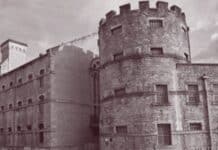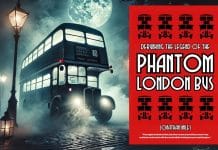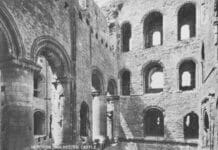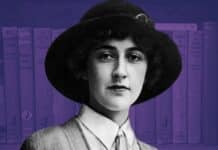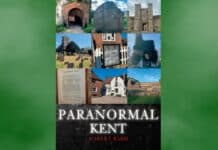London’s most famous horror stars and authors came from south of the Thames. Boris Karloff, Claude Rains, Elsa Lanchester, the list goes on. DAVID TURNBULL pays tribute to these spooky South Londoners.
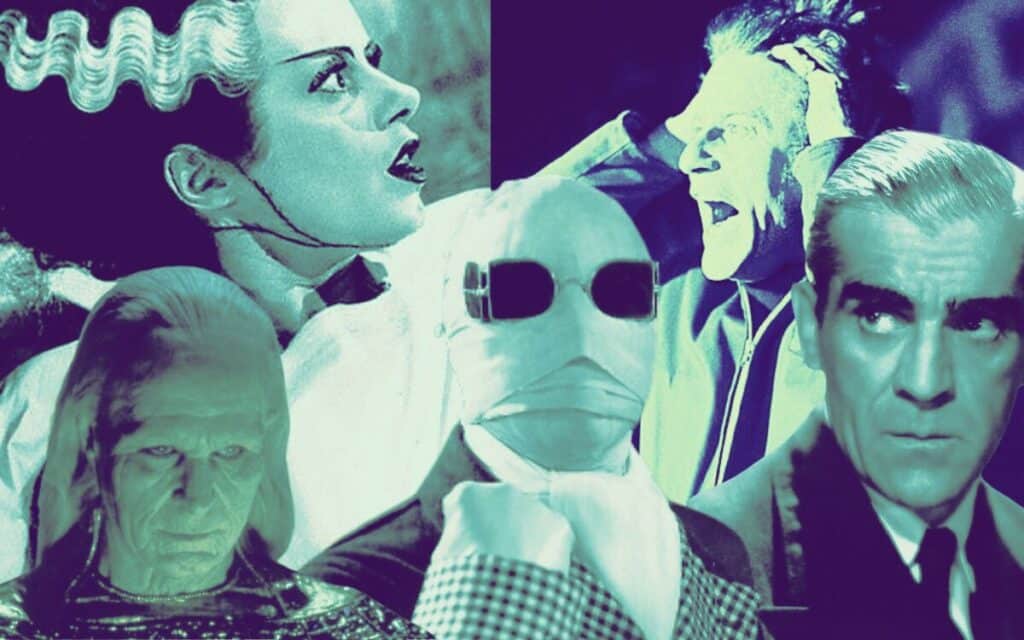
Beyond the Southbank area of the River Thames, the inner boroughs of South London are an area to which tourists and many Londoners themselves rarely venture.
It is an area, however, that has produced a huge number of horror and science fiction writers and many works that have found their way onto cinema screens.
These include H.G. Wells (War of the Worlds, The Time Machine, and The Island of Doctor Moreau), Angela Carter (The Company of Wolves), and Dennis Wheatley (The Devil Rides Out, To the Devil a Daughter).
And, stretching right back to the silent era, there have been dozens of big-screen depictions of Herne Hill-based author Sax Rohmer’s supernatural supervillain, Fu Manchu.
It is also an area from which many actors and actresses who made their mark in horror and sci-fi movies left to cross the Atlantic. Charlie Chaplin is perhaps South London’s most famous export.
After a childhood of poverty, including many spells in the Lambeth Poor House, he relocated to America, where, through his comedic Little Tramp persona, he became a prototype of the international superstar.
Later in life, Chaplin wrote, directed, and produced movies, as well as becoming one of the founders of United Artists Film Studios. He isn’t particularly known for horror or sci-fi movies, but a few things are worth mentioning in terms of his long and illustrious career.
His 1921 film The Kid introduced the world to the child actor Jackie Coogan, who went on in later life to play Uncle Fester in the original 1960s Addams Family TV series.
When H.G. Wells crossed the Atlantic to work on Alexander Korda’s 1933 adaptation of his novel The Shape of Things to Come, Chaplin played host to him.
Chaplin’s iconic 1936 movie Modern Times features a huge TV screen on which the factory manager is omnipresent, predating the use of similar imagery in George Orwell’s 1984 and Ray Bradbury’s Fahrenheit 451.
In 1947’s Monsieur Verdoux, written and directed by Orson Welles, Chaplin pioneers the sympathetic portrayal of a serial killer, which has now become a common cinematic trope.
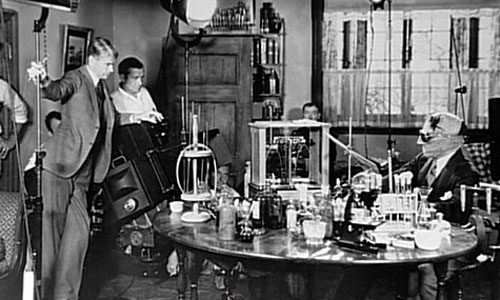
South London’s Top Horror Stars Revealed
In the 1930s, James Whale’s tenure as one of the directors for Universal Studios’ classic monster movies resulted in breakthrough roles for three South London-born actors.
When Whale took up the role of director of 1931’s adaptation of Mary Shelley’s Frankenstein, he had just directed Waterloo Bridge, a story partially set on one of the most iconic bridges leading over from central London to the south. His leading lady in that film, American actress Mae Clark, was then cast as the wife of Baron Frankenstein.
For the role of Frankenstein’s monster, he turned to South London actor William Henry Pratt, better known by his stage name Boris Karloff. At the time, Karloff had already appeared in dozens of movies on both sides of the Atlantic, but it was his iconic depiction of the huge shuffling monster, constructed from different body parts, that launched a career in horror movies that lasted for over thirty years and earned him the name Karloff the Uncanny.
Karloff himself suffered horrors of his own. Excessive hours in costume on Universal sets caused long-term health problems, a situation that resulted in him joining forces with fellow monster actor Bela Lugosi to become among the first to be signed up as members of the fledgling Screen Actors Guild of America.
Claude Rains was born south of the Thames, in Clapham, on 10 November 1889. One of only three children who survived a family of 13, he almost died himself in the trenches of World War One when he was caught in a mustard gas attack. The incident left him partially blind in one eye and suffering permanent vocal cord damage, which gave him the distinctive voice needed to play one of his best-remembered roles: that of the Invisible Man in Whale’s 1933 Universal Studio interpretation of the H.G. Wells novel.
Despite being invisible or wrapped in bandages for the majority of the movie, Rains went on to have an illustrious Hollywood career, with villainous roles including Prince John in The Adventures of Robin Hood (1938) and King Herod in his final film, The Greatest Story Ever Told (1965). In true Hollywood fashion, he was married six times. His other horror-related movies include The Wolf Man in 1941, in which he played Sir John Talbot, and The Phantom of the Opera in 1943, in which he played the phantom.
Whale followed the success of Frankenstein and The Invisible Man with Bride of Frankenstein in 1935. Alongside Karloff, he cast South London actress Elsa Lanchester in the dual roles of Mary Shelley and the monstrous reanimated Bride. Like Karloff, Lanchester, born in the South London borough of Lewisham in 1902, had previously appeared in many films on both sides of the Atlantic. These included three short silent movies written specifically for her by H.G. Wells.
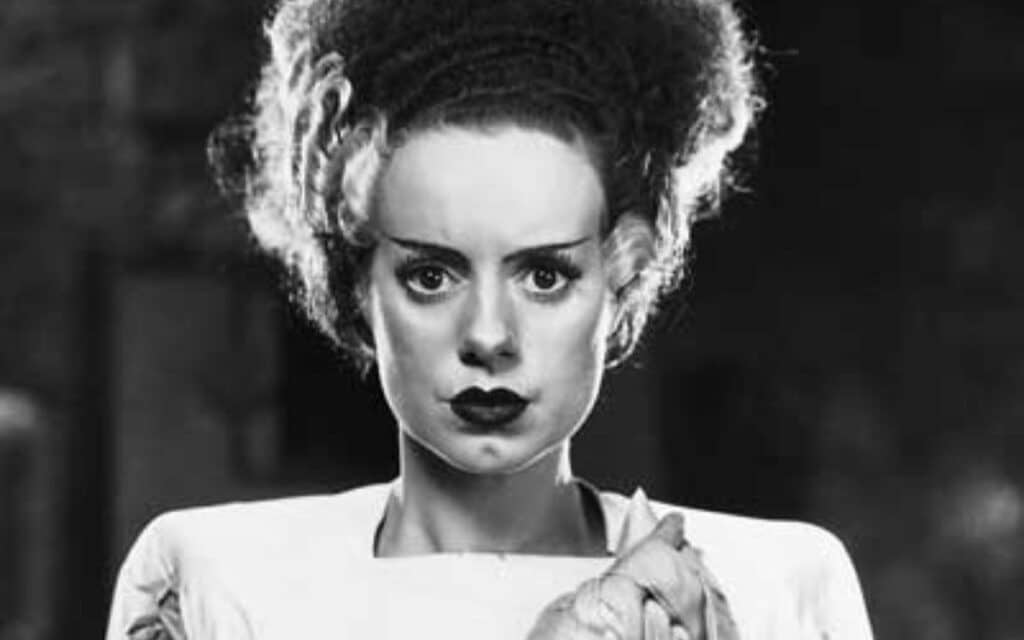
Unlike Karloff, however, her career did not veer predominantly towards horror. Her post-Frankenstein roles included parts in Lassie Come Home, That Darn Cat, and Mary Poppins. However, she returned to horror in the 1970s in movies such as Willard (1971), about a boy with a psychic connection to a pack of bloodthirsty lab rats, and Terror in the Wax Museum (1973), produced by none other than Bing Crosby.
Hot on the heels of Karloff, Rains, and Lanchester came Ida Lupino. Born in Herne Hill in 1918, she was part of a South London theatrical dynasty. Her parents were well-established music hall artists. Her uncle, who went by the stage name Lupino Lane, turned the song The Lambeth Walk, from the musical Me and My Girl, into one of the earliest examples of an international hit.
Lupino’s first Hollywood screen test was for Paramount Pictures’ 1933 version of Alice in Wonderland. She didn’t get the role, but she did make such an impression on studio executives that she was awarded a five-year contract with Paramount.
Like Chaplin before her, Lupino wasn’t satisfied with limiting herself to acting roles. She also accomplished herself as a writer and director, and she set up her own production company in the 1950s. Lupino was the only woman to direct an episode of Rod Serling’s Twilight Zone with Masks in 1964 and was, as a consequence, the only director of an episode to also appear in an acting role with her star turn in the 1959 episode The Sixteen Millimeter Shrine.
The last two movies she appeared in as an actress were both in the horror and sci-fi genres. In 1971, she appeared alongside William Shatner in the supernatural thriller The Devil’s Rain, and in 1973, she appeared in the animal sci-fi horror movie The Food of the Gods, based on the novel of the same name by H.G. Wells.
Another Herne Hill resident was Roddy McDowall. Born in 1928, he grew up a few streets away from the house where Sax Rohmer was writing his Fu Manchu novels. His family moved to America in the 1940s. As a naturalized citizen, he served in the US Army Reserve Corps. One of his first movie appearances was in Lassie Come Home, alongside fellow South Londoner Elsa Lanchester. He would appear with her again in the 1960s in That Darn Cat.
He is perhaps best known for his roles in both the 1960s original Planet of the Apes films and the 1970s Planet of the Apes TV series. His horror credits include The Legend of Hell House (1973), Embryo (1976), and The Alien Within (1996). His most iconic horror role was that of veteran horror actor and vampire hunter Peter Vincent in Fright Night (1985) and Fright Night Part Two (1988). He also starred in the short-lived 1977 TV series The Fantastic Journey concerning the crew of a ship investigating disappearances in the Bermuda Triangle who discover a mysterious island with a portal that can take them to alternative dimensions.
Like Ida Lupino, he also appeared in a Twilight Zone episode (People Are Alike All Over) in 1960. Also, in Lupino’s footsteps, he turned his hand to directing, with the 1970 folk horror movie Tam Lin, starring Ava Gardner and Ian McShane.
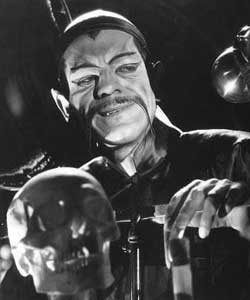
In recent years, South London has continued to supply Hollywood with actors who make their mark on the genre. Gary Oldman was born in the New Cross area of Lewisham in 1958. His credits include the title role in Francis Ford Coppola’s Dracula, Sirius Black in the Harry Potter series, and Commissioner Gordon in the Batman Dark Knight franchise. He also appeared in a host of other genre movies, including The Fifth Element, Lost in Space, and The Book of Eli.
Also born in Lewisham is Jude Law (b. 1972). His roles include Albus Dumbledore in the Fantastic Beasts franchise and Ton-Rogg in Captain Marvel. His other appearances include Gattaca (1997) and A.I. Artificial Intelligence (2001). He also played Doctor Watson in Robert Downey Jr.’s Sherlock Holmes and Captain Hook in the 2023 film Peter Pan and Wendy.
A more recent addition to South London’s pantheon of Hollywood stars is John Boyega, whose career started with a sci-fi/horror movie based very firmly in South London, 2011’s Attack the Block, set around Kennington Oval and written by Joe Cornish, who had lived in the area. Born in nearby Camberwell in 1992, Boyega has gone on to huge success as Finn in the most recent Star Wars trilogy, Jake Pentecost in Pacific Rim Uprising, which he also produced, and Fontaine in 2023’s tongue-in-cheek They Cloned Tyrone.
And finally, let’s not forget David Bowie, born in Brixton and raised in Bromley. As well as a ground-breaking musical career spanning several decades, he was also an accomplished actor. His roles included the alien in the 1976 film version of Walter Tevis’s The Man Who Fell to Earth, the Goblin King in Jim Henson’s 1986 puppet fantasy Labyrinth, and a vampire in the film version of Whitley Strieber’s The Hunger.
Tell us your thoughts on this article in the comments section below!


